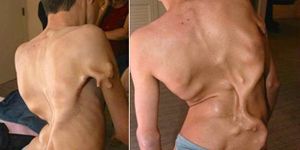Affordable New Exoskeleton Could Help Paraplegics Walk Again
Exoskeletons are very cool pieces of technology and are extraordinary because they can either give a regular human being superhuman strength, or they can turn a disabled human being into a more-than-capable human being.
For Steven Sanchez, whose life was changed in 2005 when he was attempting a backflip off of a BMX ramp when a poor landing lead to his paralysis from the belly down, an exoskeleton has been the only answer to battling being a paraplegic. With the lack of any special medical surgery to rejuvenate his body’s lower half, he relies on technology to get him around.

A new exoskeleton that could cost about the same as a new car, approximately $40,000, is making its way to the market. Designed by SuitX, this exoskeleton is incredibly light at just about 27 pounds, and it can help paraplegics to walk again.
Despite how much it helps in the walking process, a walker or crutches will still be required for paraplegics while using the SuitX exoskeleton, but despite the caveat, according to Sanchez, “it feels like you’re actually walking.”
The SuitX exoskeleton can help a disabled person stroll around at 1.1 miles per hour on level ground, which is slower than many of your typical walkers at the park, but regardless, it’s a big difference to go from a wheelchair to actually walking with the help of an exoskeleton and it helps prevent
The secret in the SuitX’s small price tag when compared to other exoskeletons is that it’s built to help with one thing – walking. It’s not made for super power, and it’s not overly-designed.
"It’s really not much about the power, it’s about cleverness," says SuitX CEO Dr. Homayoon Kazerooni. "We've designed this machine with minimal hardware that just allows for walking and nothing else."
"My idea and philosophy is less is more," Kazerooni says. "We want to give a minimal amount to the user to be independent. We’re not saying this is a complete [mobility] machine, but if we come up with something that’s robust and simple—walks, stops, sits, and stands—that’s hugely enabling!"
Recently, a man who quit his full-time job got into a new hobby of building his own home-made exoskeleton, which can pick up the rear end of a car. The difference between this exoskeleton, and the one Sanchez is using, is that one is built for power and the other is built for mobility.
Seeing exoskeleton technology continue to mature could help disabled people all around the world in coming years, especially with the price tag beginning to shrink.
Source: Fast Co.Design








